20 Years of Speed: The Past, Present and Future of SmartSpeed
Available in:
EN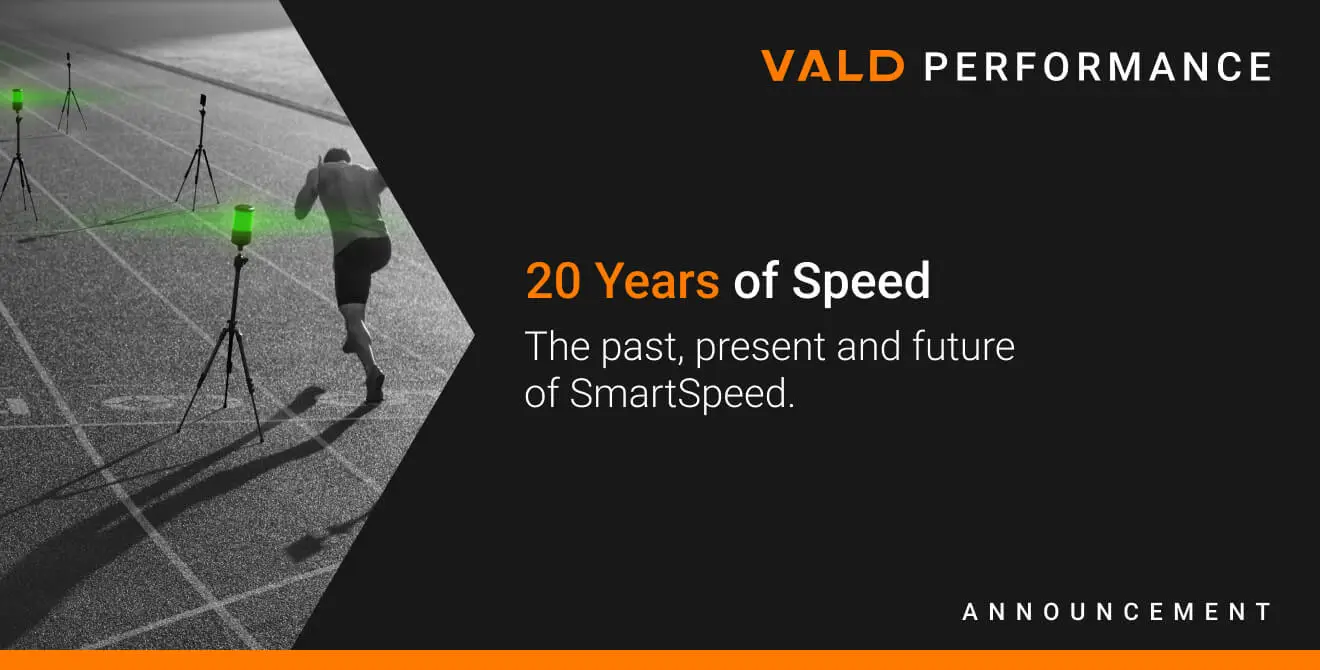
Sam James – Co-Founder & Chief Strategy Officer Most readers would be aware that VALD recently launched the completely overhauled SmartSpeed Plus following 18 months of research and development since our 2021 acquisition of the original SmartSpeed technology suite from Smartabase (who, in turn, were acquired by Teamworks in January this year).It’s been an exciting ride to get here, and I am so incredibly proud of our team’s ability to listen to industry feedback, develop innovative and practical solutions, and execute on delivering these solutions back to our clients. From servicing, practical set up, workflow of large testing cohorts, battery life and ultimately reporting the results – the VALD SmartSpeed team worked relentlessly to deliver SmartSpeed Plus which has answers to these frustrations.Here’s some insight into our team’s experience with bringing SmartSpeed Plus to life, as well as some of the history of SmartSpeed, given its legendary and pioneering status in the sports technology industry.
The History of SmartSpeed
In 2003, I was still a clueless high school student, and my co-founder Laurie Malone had just graduated – the two of us hadn’t even met yet. It was that year that Smartabase (then Fusion Sport) founder Markus Deutsch invented and launched the world’s first wireless timing gate system, the original SmartSpeed.Timing gates had already been around for a while at this point, but SmartSpeed brought them into the 21st century, with fully wireless functionality, colour LEDs and a custom, dedicated PDA (or “Personal Digital Assistant” – that’s the name for early tablets pre-dating the iPad, for those too young to know the acronym) which was later replaced with SmartSpeed iOS and Android mobile apps.Over the years, the SmartSpeed product line grew, and when VALD was founded in 2015, Markus and Smartabase were true leaders in the industry, having played a big role in creating the sports technology industry we know today. We tried to learn from their successes, and got to know Markus and the team fairly well in the process.Back then, we never could’ve imagined that – just six years on – VALD would be acquiring the SmartSpeed line from Smartabase.
SmartSpeed Joins VALD
Since Laurie and I started VALD, we’ve had more than a few clients ask us if we’d ever consider developing our own timing gates (much like they did about handheld dynamometers before we launched the DynaMo), however in this instance, we were steadfast that it wasn’t a market we wanted to enter.Primarily, this was because we didn’t want to compete with Smartabase. Over the years we had established a number of integrations with Smartabase, built a large, shared group of mutual clients, and got to know their team well.So, when Markus came to our offices to share his idea of SmartSpeed joining VALD, it was the perfect storm. On the one hand, it was beyond humbling that Markus would entrust us with SmartSpeed, and felt like a real ‘passing of the torch’ moment. On the other hand, we knew we could do it justice – it had been quite a while since SmartSpeed had seen a significant update, and before long our product team was brimming with ideas for what the next generation of timing gates could look like.
“VALD was the obvious choice, we knew from the start that this (VALD) was where we wanted SmartSpeed to go, we wanted it to go to a good home, we wanted it to go forth and reach its potential and it was the obvious thing to do.”Markus Deutsch – President, Smartabase at Teamworks
Understanding the Timing Gate Market
While timing gates have been around for decades, they were new to VALD. We needed to make our way up the learning curve if we hoped to improve on what was already a wildly successful product. We also knew that timing gates could be polarizing, and plenty of users have well-justified gripes with incumbent systems.Luckily, along with the SmartSpeed system came its large, loyal and highly experienced network of existing users, who knew timing gates as well as we could ever hope to, and proved an invaluable resource in understanding how to approach developing a new and improved version.
“Timing gates within the sporting environment have always been famous for failing the coach. Everyone knows to allow extra time in your session to either re-align gates, or replace one that’s battery has died.”Lachlan Wilmot – Co-Owner & Director of Coaching and Performance at Athletes Authority
As VALD’s newly-formed SmartSpeed product team spoke to user after user, some key themes became clear:
Waiting for gates to be serviced or repaired was extremely inconvenient.
Historically, if timing gates needed a check-up or repair, users needed to package up and post their units back to the manufacturer, where they would wait in queue to be serviced, then eventually posted back to them. This was a process that could take weeks or even months to complete, and would mean users’ systems were sometimes completely out of action for these periods, in turn potentially missing valuable testing opportunities. Plus, some of the gates coming in for service were over 15 years old and multiple generations out of date, which made it very hard to find and keep stock of spare parts!
The worst part about timing gates was setting them up.
After setting up as many as 30+ tripods, gates and reflectors, users would need to align each gate with its reflector (often difficult in direct sunlight), pair them via the app (not always as reliably as one might hope), then walk through each gate in order, to tell the system which order the gates were laid out in. If anything goes wrong in this process, it can end up being a stressful rush to troubleshoot and finish getting ready before testing needs to begin.
Coordinating large group of athletes was a logistical nightmare.
Most timing gate software has the ability to create queues and test large groups of athletes, but most aren’t particularly flexible, which makes it difficult when athletes run out of order, don’t show up or plans change at the last minute (all of which are very, very common) and you can’t easily reorder or edit your testing list. SmartScan RFID bands historically went a long way to helping with this, but some teams want a different option – one that doesn’t require the separate coordination of getting the right band onto the right athlete’s arm.
It was hard to do your job with a group of athletes crowded around your iPad.
After a drill, athletes’ results are typically only available on the mobile device running the tests, so if they (or their parents or supporters) want to see the results, it has to be over the coach’s shoulder – not particularly convenient when they’re trying to run the next drill!
Batteries were the bane of most users’ existence.
Often spending years in the sun, timing gates’ batteries live a tough life, and typically degrade over time. Not just that, but most models have integrated batteries, meaning if the battery dies, the entire unit may need to be replaced. Even when batteries are operating well, needing to constantly pack and unpack gates for charging can be time consuming and frustrating.
Reporting on timing gate data has not moved with the times.
While Smartabase obviously specialises in data visualisation, most timing users don’t have access to it, let alone any other visualisation platform, and are stuck with only very restrictive reporting, often requiring them to spend hours in Excel generating their own reports, after an already long day on the field. Possibly the most important piece of the puzzle – what coaches do with the data after they collect it – was an area we knew we could help with.These themes became our guiding criteria for designing SmartSpeed Plus, and while there were a bunch of other great features and upgrades we also wanted to include, we knew we were making a product for experienced users who know what they want, so our primary goals were clear.
Developing SmartSpeed Plus
When SmartSpeed joined VALD, we had a great opportunity to go back to the drawing board. Along with the acquisition came some amazing staff including electronics engineer Luca Robertson and sports technology industry veteran, Jose Galindo, who already had some great ideas for improvements we could build into SmartSpeed Plus, and we were keen to do them justice, as well.With our clients’ feedback and team’s ideas, the SmartSpeed team worked their way through each criteria, solving them one by one (albeit not always quite that linearly).
Servicing
While most of the issues clients raised were related to the products’ hardware and/or software, and therefore would take significant time and effort to solve, we were able to address the hardware servicing wait times almost immediately.As soon as SmartSpeed joined VALD, we began offering the products to clients on a subscription basis, much like other VALD systems. This meant that, as long as a client was currently subscribed, if something went wrong we could immediately replace the malfunctioning unit with a new one. This cut the wait time for repairs from as much as a month or more to as little as a few days.We continue to offer servicing options for non-subscription clients, in the interests of continuing to support SmartSpeed’s large, loyal user base, but offering the new subscription option was a great, quick, positive impact we were able to deliver, right out of the gate.
Setting Up
While it’s arguably impossible to prevent the need to physically set up a timing gate and a tripod, our hardware, firmware and mobile app teams came up with some great solutions for cutting down on setup time once the SmartSpeed Plus gates are in place. Firstly, the team reworked our wireless pairing protocols, significantly speeding up detection and pairing. You’ll see that when the app starts searching, nearby gates appear almost immediately.Also, now that we also have a hub-free system in SmartSpeed Plus, there’s no longer any need to connect to one device first then connect it to all of your gates.
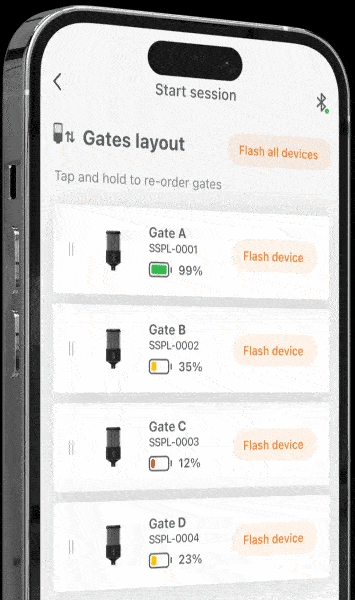
Once you’ve detected your gates, simply selecting one makes it the primary, and it automatically connects to all of the other gates nearby and configures them as secondary units.
Finally, possibly the most annoying part of setting up timing gates – namely walking the track after setup is complete – has now been confined to the past.
SmartSpeed Plus allows the user to reorder the gates in the app with a simple drag-and-drop interface – much faster, and much more convenient.
I’ll also tease that we have an even faster and easier update to configuring SmartSpeed Plus gates very soon, but I’ll leave the big reveal to the marketing team for a later date!
Managing Athletes
Once the gates are set up, the biggest challenge begins: running the testing session.
Trying to get dozens of (often young, excited and easily distracted) athletes to line up and run in order can be a near-impossible task, and often very stressful for coaches when one missed athlete or one athlete who runs out of order can cause chaos in traditional timing gate systems.
To counteract this, our UI/UX team (led by Gigi Ellwood) and mobile team (led by Nishant Shrestha) developed what I would consider the best athlete queue creator and editor I’ve ever seen in a mobile app. In super-intuitive fashion, they came up with elegant ways to:
Before a testing session:
- Add athletes, groups, or both to a queue;
- Reorder the queue seamlessly, including athletes within a group; and
- Remove athletes within a group from the queue, if they won’t be running that day.
Then, most importantly, during a session:
- Reorder your in-progress queue, so it’s no longer an ordeal if an athlete wants to run out of order or doesn’t show up on time;
- Skip athletes, or remove them from the queue for the day; and
- Re-test athletes, either straight away (for example if they didn’t complete the drill correctly) or later (for example if you want each athlete to record two or more attempts).
All of this might seem obvious hearing it now, but these are challenges that simply hadn’t been solved before, so hats off to the team for cracking it. Viewing Results
SmartSpeed Plus’ most recognisable feature is easily its inbuilt 360° LED display, wrapping around each gate and making it visible from any angle. While it became clear from the outset that we wanted to incorporate this into SmartSpeed Plus, the team grappled with exactly how best to implement it – testing flexible display panels, light strips and a range of other technologies. They landed on custom circuit board-mounted LED columns, which proved to balance durability and brightness better than any other solution
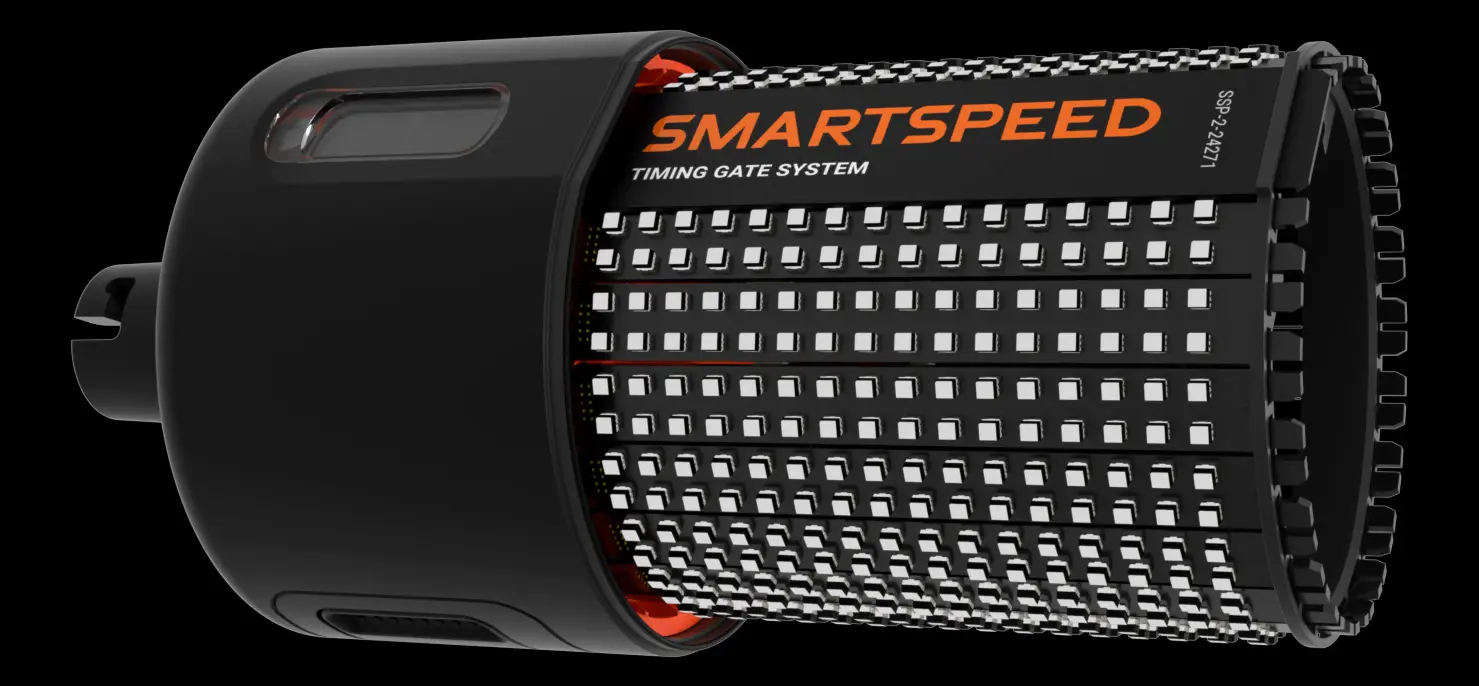
SmartSpeed Plus features 20 individual LED columns which work together in concert to create a 40 x 16 pixel wrap-around display, visible from over 50 m / 160 ft.
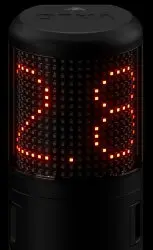
The most obvious benefit of this panel was the ability to act as a scoreboard, displaying results right where the athlete was running, rather than relying on the coach’s iPad or a separate scoreboard.
Our engineers even made it possible to see live splits on each gate. For example, as an athlete passes the 10-yard, 20-yard and 30-yard marks in a 40-yard dash, you’ll see corresponding splits appear on each gate – this seems so intuitive, but simply had not been done before.
Beyond showing times, the LED display allows us to also show athlete names, live feedback during a drill, and other helpful information and graphics to make using SmartSpeed Plus more intuitive. Overall, this has made for a massive improvement in the usability and versatility of timing gates, and we plan to continue to leverage the LED display in future updates.
Batteries
For most VALD products, embedded rechargeable batteries are ideal, as they simplify the products’ design and allow for one simple charging method. However, for SmartSpeed Plus, we knew the batteries needed to be removable, for a few key reasons:
- This allows them to be charged without needing to fully pack down the gates at the end of a testing session.
- This allows clients to keep spares on hand, to limit interruptions in long testing sessions or multi-day competitions.
- If battery life declines over time (which is normal for lithium-ion batteries), they can be easily and affordably replaced, without needing to replace the entire unit.
For SmartSpeed Plus’ battery packs, the team studied a range of existing products including power tools, which feature some of the most durable and hard-wearing batteries available. They delivered a simple, compact design which fits securely into the body of the SmartSpeed Plus unit, yet is extremely easy to insert and remove and offers around 10 hours of battery life when running the gates at full brightness.
“Finally, it looks like VALD have put their user-friendly touch on speed gates as well. With the simple set up, and removable battery packs, we have been having a lot of great use out of the new equipment here at Athletes Authority. The simple and trustworthy set up has allowed us to integrate the VALD system into a permanent testing battery for our athletes.”Lachlan Wilmot – Co-Owner & Director of Coaching and Performance at Athletes Authority
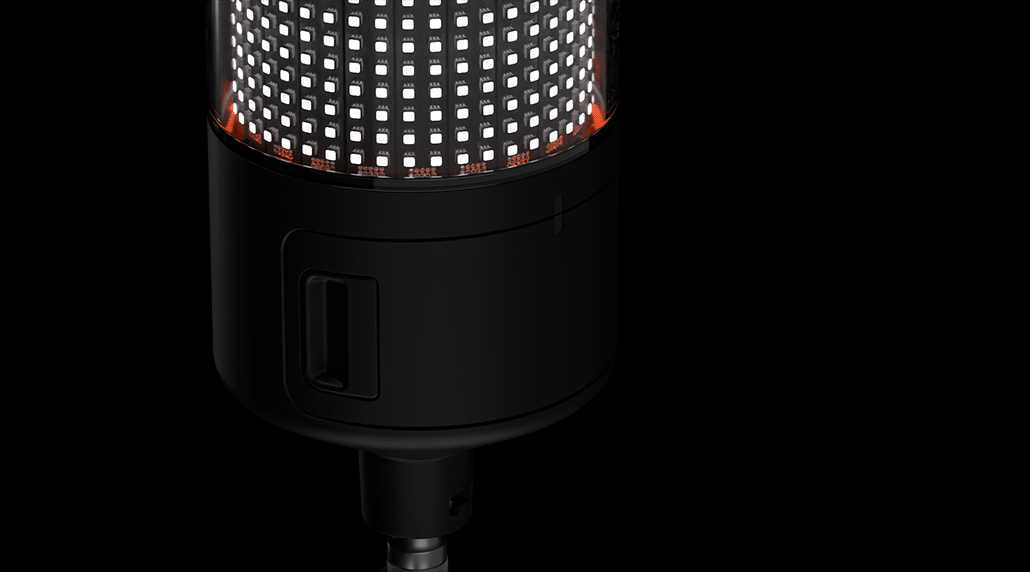
Batteries can be charged via USB while plugged into a SmartSpeed Plus unit, but we also took it a step further by designing a custom, four-battery charge dock, which can live in the office or cupboard, or charge the batteries direct from your travel case.
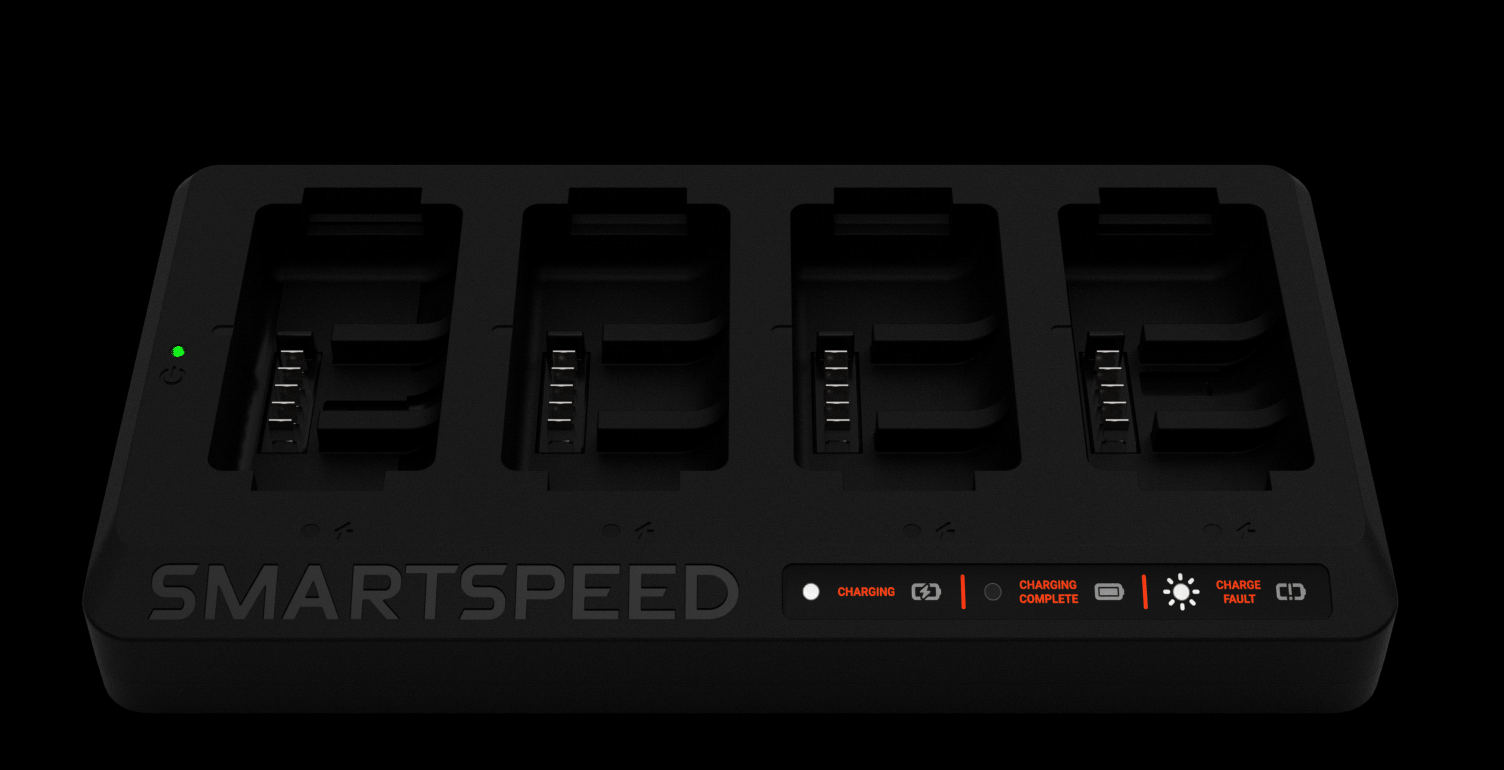
Reporting Results
Despite listing this last, this is actually the problem we tackled first, given its importance to our many VALD clients and existing SmartSpeed users around the world.
Given how all of our other products work (i.e. tightly integrated with all of their data centralised), it would’ve come as no surprise to most that we would want SmartSpeed data to make its way into VALD Hub. However, as always, it was easier said than done.
Thanks to SmartSpeed’s long history and large, active, and global user base, it’s safe to say there was a lot of data to ingest. This process is never straightforward, either, as no matter how good the origin (in this case: Smartabase) and destination (in this case: VALD Hub) databases are, there are always significant differences and technical challenges along the way.
Our engineering team worked alongside Smartabase’s team to make this migration as smooth as it could be. Despite no shortage of headaches along the way, I think this entire project was a model example of a successful acquisition and I’m proud to say we’re all still friends at the end of it!
Now, almost all SmartSpeed users’ (we’re still helping the final few!) data lives in VALD Hub, and they have access to all the easy-to-use reporting tools as existing VALD clients, including the ability to report on SmartSpeed data alongside data from NordBord, ForceFrame, ForceDecks, DynaMo and more.
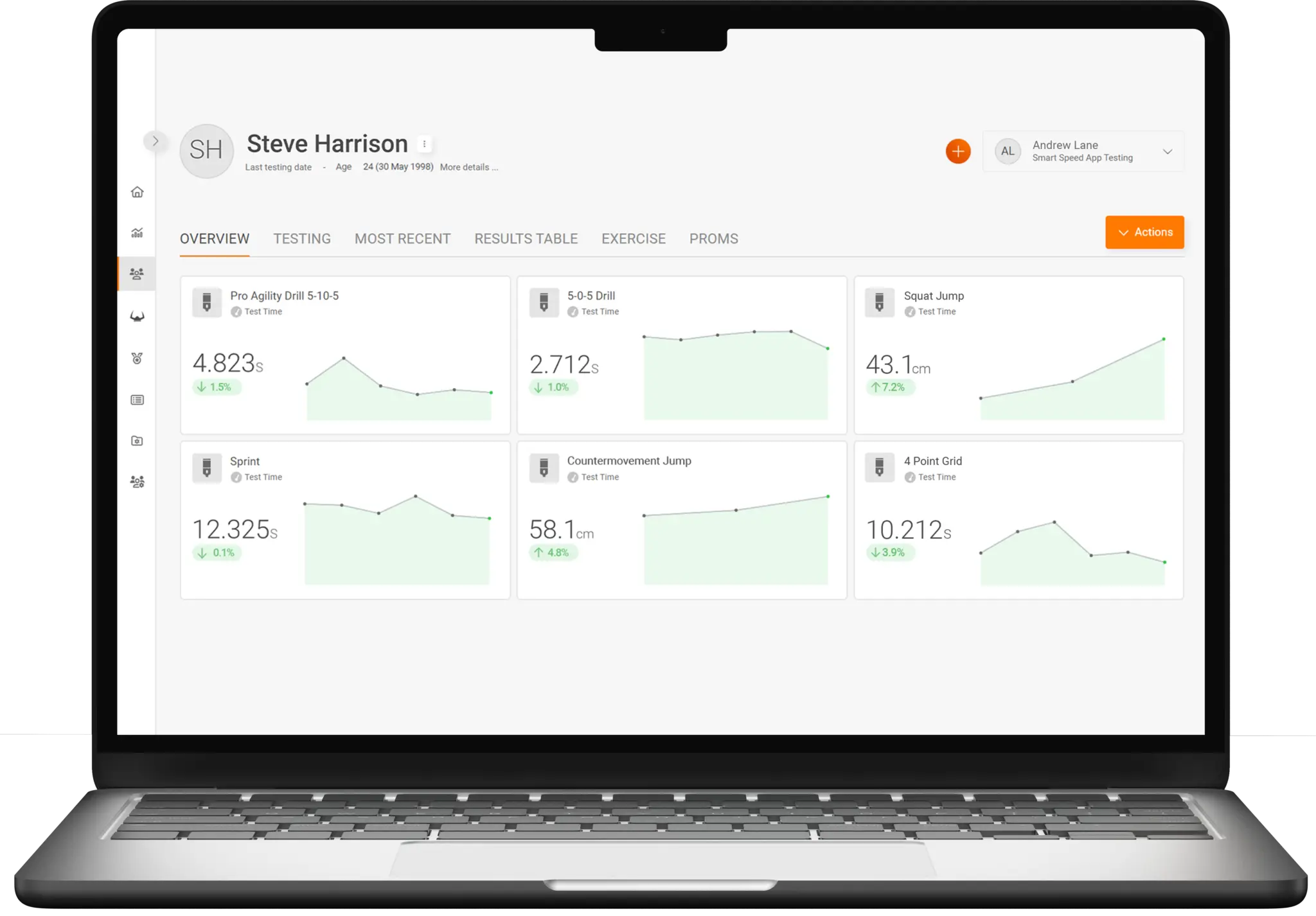
It’s been a whirlwind to see the history of SmartSpeed unfold, and I still pinch myself occasionally at the thought that VALD was deemed worthy of taking on such an instrumental piece of sports technology history. However, I’m even more excited to see what’s to come, as I know what the product team has in store for SmartSpeed Plus in the coming months.
If you’d like to learn more, if you have any questions or would like to explore what it would be like to work on building, developing and helping our clients implement exciting products like SmartSpeed Plus, feel free to drop me a line via LinkedIn. We’re always looking for great people.
